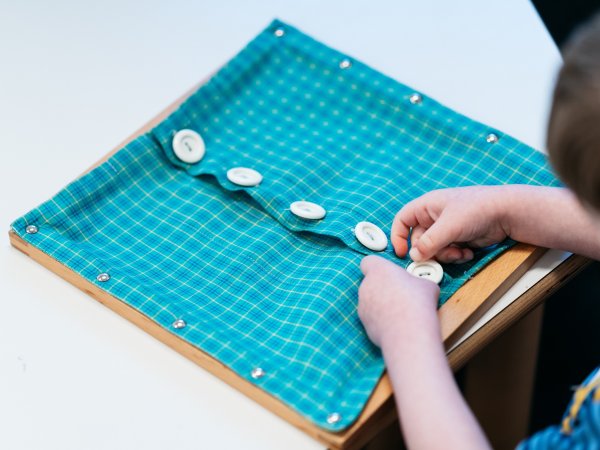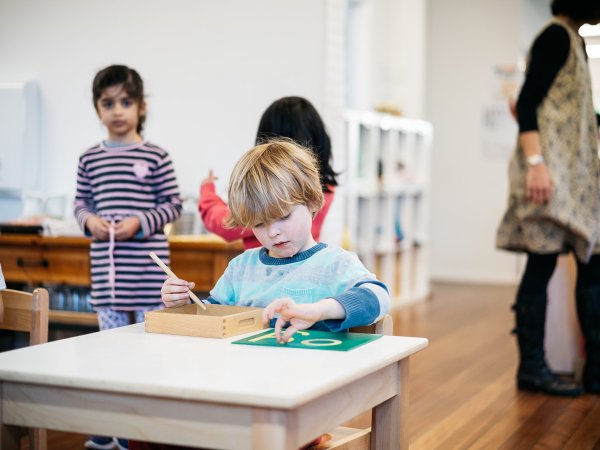Ages 3 – 6 Years Old – Montessori Preschool
To a first-time visitor to the Montessori prepared environment, the classroom may seem quite different from other preschools. Montessori classrooms are multi-aged and the children’s ages range from 3 years to 6 years.
In our classrooms, there may be a child reading quietly in the corner, a child pouring water or grains from jug to jug at a table on his or her own, a small group of animated, chattering children playing a language game or a child arranging a series of pink cubes on top of each other to make a “tall” tower. There may also be a child who is just standing and watching another seemingly unoccupied or a child who is busy cutting fruit for morning tea. At this age, the children are intensely curious and need to discover and explore their surroundings. The children are also keenly attuned to their senses and they love to explore shapes, textures, smells, colours, sounds and tastes. Children at this age also have a need for “everything to be in its place” and a routine to follow.
The children are recognised as individual and are presented with individual lessons. They do not do the same activity at the same time and they are not bound by timetabled group learning. They use their senses to learn independently in the environment.
A Montessori student does not receive rewards nor punishments such as stickers, stars or awards. We help the child to self-regulate through Grace and Courtesy lessons to instil the boundaries and expectations of their environment. These boundaries and expectations are usually the same as those expected in the child’s society. The teacher is more of a “facilitator” who connects the child to the environment of Montessori materials. Each child is valued, and our aim is to help the child develop a love of learning and become an independent and peaceful person.



